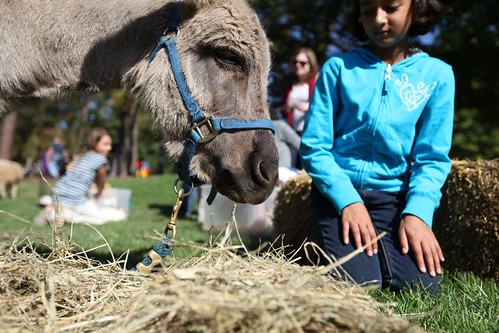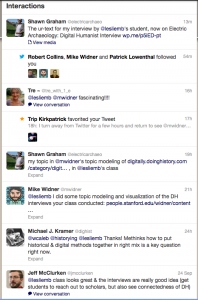The day of the earthquake, find your family and navigating through the city, finding clues and meeting people along the way and helping them, and they help you. Setting: Day of, first person on Market Street, mundane day, event happens, changes everything, changes a lot. Character: First person shooter Goal: Reunite a family and feed them Time: 2-3 days. The time in the game is space related. Events in the game are triggered by placement, time events are a possibility. Game Elements: Suspense Obstacles: Ruin of the city, aftershocks, chaos, fog of war, emotional activation, hope, trail/clues of hope, Social Connection/Satisfying Work: interactive with other characters, help others and they save you, Meaning: Learning about the 1906 earthquake
Aftermath: San Francisco
The proposed game would allow the player to select a character in order to experience the earthquake and subsequent fire as they would have at the time. The player can select an actual person from the earthquake or they can choose to play as a composite character. Due to building standards, density and rescue attempts, the earthquake was experienced differently by the wealthier residents of San Francisco than by the residents of Chinatown, for example. If the player chooses an actual person, there will be elements that connect their actual experiences to the gameplay. Composite characters will have randomized experiences based on survivor accounts.
In terms of both space and time, the game will begin shortly before the earthquake so that the player will be able to orient themselves somewhat with their surroundings before the devastation hits. After the earthquake, the goal of the gameplay will be to stay safe in the changing city and eventually, begin to rebuild San Francisco. There will be an interactive or online element that will allow players to connect with friends in order to create a community.
Ultimately, the space element of the game is more important than time as the goal is to reestablish San Francisco which can take a relatively short time or much longer depending on the length and frequency of gameplay as well as how many people participate.
Additional elements will integrate photos, film clips and news accounts of the period.
San Francisco Earthquake Tycoon
Game Introudction:
Video from perspective of main character (player) showing life as it probably was two minutes before the quake, viewing San Francisco from a window inside a building overlooking Market Street. At two minutes the quake hits and immediately after the first shock the main character (so far directed by the game, real player is just watching this happen) works his way down to the lobby and exits through large double doors onto the street. Once the doors open gameplay begins and a voice-over story (narrated by Morgan Freeman) explains that you (the player) has just survived the San Francisco Earthquake of 1906 and it is up to you to rebuild the city from the ruins.
The object of the game (goal) is to reconstruct the city in the correct order, trying to prevent obstacles. Obstacles would depend based on which buildings/areas the player choose to construct and in which order the player constructs them. For instance, if the player constructs the market before the police station, looters might destroy the market because there is no police force to control the city. The game would be similar to Sim City, only it would follow a sequential order that is driven by the historical record.
By Courtney, Jon, Carl, Dan.
Committee of Fifty : 1906
Eric Schooley
Jim Duran
Ryan Regis
We envision a sandbox style game platform, in which the disasters of 1906 would play out in a linear fashion. Our “main” characters would be led by a single “mayoral” character, delegating rescue and response teams throughout the city. Time in our system would be divided into sequential “mini-missions” with set time limits. If a crisis were to be resolved before the times expire, the player will b given a slight reprieve to consolidate forces and resources. If the task is incomplete when time expires, the next crisis, or “mini-mission,” will begin with little warning.
The teams provided will resemble military, civil, and civilian teams from the era, as each crisis develops the “mayor” will be responsible for coordinating relief, or deploying resources to a different crisis. The unstated goal of the game is to educate the player on the progression of this disaster and relief efforts. The more clear goal, as it relates to the player, is to decide which parts of the city to attempt to rescue and determine which areas should be sacrificed. Later in the game, the player may be called upon to deal with media responses.
The feedback system for this game will include several status bars, accessed on a specific page. They might include: loss of life, property damage, response team health, civilian trust, major/minor landmarks saved/sacrificed, citizen panic level, city//private funds, and callousness of the player.
Unnecessary obstacles, could include traffic blockage, innocent objects, and even the terrain of the area would cause difficulties. The in-game animations will be based on, and include, archival photos and interviews. There are a LOT of options for actual game play. Each neighborhood includes specific buildings, and each of those has tenants and property that must be addressed. Will you spend resources, and possibly lives, in the attempted rescue of any one location? Is one building more valuable than others? What will the citizenry/media think of your choices?
While our layout has made space a larger factor in the actual game play, wee have taken a fast event and drawn it out into something explorable, from a variety of perspectives. However, time will remain a crucial factor, since it was one in the actual event.
Emotion activation will come throughout the game with loss of life and property, several heart-wrenching photos can be included. Further, at the end of play, you WILL be held accountable for your choices. You will be confronted with characters based on actual people, complete with profiles. Their lives will be in your hands, and when the game ends, you will be faced with accounts from survivors.
Earthquake Extravaganza
After the main character is awoken by the earthquake, he realizes danger is afoot and he must traverse across town to rescue his family who is on holiday with their grandma. Along the way, the character must deal with aftershocks, army patrols, and looters! All the while, he must deal with mother nature’s fury. Check points along the way not only save the player’s progress, but also create a realistic sense of urgency. The best part of the game, is that the checkpoints and obstacles are based upon real life data procured from newspaper articles detailing the events in 1906 San Fransisco. If certain tasks are competed, certain family member’s life sources decrease. Likewise, if specific items are procured, life members’ life sources will increase. The entire point of the game is to reach his family members with the necessary foodstuffs and supplies before his family’s life sources deplete to potentially fatal levels.
Both time and place play an important role in this game. Time is integral to the movement of the character, he is trying to get as far as possible before the next aftershock or military corps is found. Place is also important in that the character must get from one side of town to the other in order to rescue his family. Because of the historical and geographic nature of this game, time and place are truly linked; without time or place, the essence of the game would be lost.
Adam, Bahnu, Lucas, HannaLore
Loot or Shoot
Katie, Nicole, and Corey
A first person game where you choose your life path. Are you a San Francisco Policeman or a optimistic looter? The game starts at 5:12 am when your character wakes up to the end of the world. When the dust settles in your apartment you hear screaming from the neighbors. At this point the gamer has the choice to pick up a uniform from the closet, or to dress in a black outfit choice for moving unobserved.
Policeman: After choosing the police option you have a goal: protect and get to the army. Along the way find fellow policemen and friends to help you keep the looting at a minimum. Save people from burning and collapsing buildings. Occasionally when you save people the game breaks and gives you personal shots. You save someone in Chinatown and you heard a snapshot of their life in 1900s life and how they survived. Eventually you and your friends meet up with the army who fights to head off the fire consuming the city. You help them and eventually the city returns to normal, and you begin to rebuild.
Looter: You’ve chosen the path of risk and riches. You spend as much time as you like simply looting the Sears and Roebuck and aristocratic homes. You avoid a troublesome cop bent on stopping your fun. Avoid burning buildings and have the option of joining and working with other unscrupulous characters. Build a mob like crew of looters, or work on your own. Eventually, your looter realizes there is a large opportunity waiting for you in the US Mint. The game slowly pushes you towards the Mint. Hide and dodge policement and soldiers trying to capture you. In the end you either end up with a literal pile of gold or behind bars for the rest of your life.
Historical inserts: throughout the game, either as a cop or a looter, history is available. The gamer has the option to learn about people around him/her or locations. What was the Piggly Wiggly in the 1900s? How did a Model T work? What happened to China Town before and after the earthquake. While the gamer can go through the game learning nothing, the option to learn as you game is there.
Place is the important factor here. While you can take as long as you want to accomplish your goal, you’re slowly (or quickly) moving towards a location and your ultimate goal.
Firequake
In the beginning it will show the character. Then a fire and earthquake happen. The goal of the game is to survive the earthquake and fire and get out of town within 24 hours. You will have a timer in the upper right hand corner. The game will be third person. You have to find shelter, food, water, gas, and safety equipment (band aids, ointment, rubbing alcohol…etc). You can start with friends also on the internet, or just find people along the way to try and make it easier to survive as a group. You can either move on foot or find vehicles to try and travel through the city and make it to the closest town located near you outside of the firequake zone.
By: Michael Winters and Sky Winter
Spatial vs. Temporal Storytelling (October 3)
Bembeneck’s post on spatial storytelling generated an interesting discussions in the comments about the differences between, and utility of, time and space/place to storytelling. Today we’re going to explore the ways time and space interact in public history projects in the digital realm, and we’re going to dip our toes into the waters of gaming.
Your mission for today is to propose, and then describe in a blog post, a digital game through which people learn about the San Francisco earthquake and fire of 1906. In keeping with the reading for today, think about whether space or time might be a better organizing principle or driving force for a game about the earthquake and fire (and their aftermath).
In your blog post, consider the roles of space/place and time in your game. In what ways did you consider space and time in your game planning? Which is more important to the gameplay, and why?
Some resources on the twin disasters and their effects:
- The Wikipedia page on the quake provides a good overview
- The National Archives provides a few primary sources, including some images, if you’re looking to include something like that in your historical game
- This NPR story has some interesting anecdotes and details on which you might want to draw
- You can get a real sense of place in these “before” and “after” film clips placed side-by-side
Digital Storytelling, Part II (September 26)
Resources
“Patient Zero” from Radiolab
Michael Widner’s visualization and analysis of your digital humanist interviews
Shawn Graham continues the conversation with the ur-text from his interview with HannaLore
A screenshot from Twitter:
Questions for discussion
1. How do the first 10 minutes of the Radiolab episode use the elements of storytelling described by Alexander? What makes this particular “Patient Zero” story compelling? What, if anything, do you find distracting?
2. Revisit Alexander’s description of the quintet of images “Farm to Food.” He notes the skills necessary to assemble the series: visual literacy, remixing, archival competence. What skills are necessary to interpret the series? What skills can historians assume their various audiences will bring to such an assemblage?
3. How much, and in what circumstances, should historians let viewers construct their own narratives from a collection of primary sources? What are the advantages and liabilities of allowing (or encouraging) viewers to craft their own narratives or interpretations of sources? And how might digital tools allow historians to offer a spectrum of (easier through more challenging) interpretive options to viewers of a single project?
Five card flicker
Five Card Story: You dang wood chucks, stop chucking my wood!
a Five Card Flickr story created by Dan , Carl, Sky

flickr photo by bionicteaching

flickr photo by cogdogblog

flickr photo by hummingcrow

flickr photo by Serenae

flickr photo by Danny Nicholson
Not having opposable thumbs, they were all left staring at the pot of stew on the stove, wondering how to turn it off. The vegan tiger, the sacred Hindu cow and the dang woodchuck had a human friend who took care of them. She suffered from multiple personality disorder, believing she was a Disney princess who watched ” We Bought a Zoo” one too many times. Her lifelong desire was to prepare some tasty bass for her captive friends. On the way to the market, she decided to take some sweet jumps on her scooter, wrecking miserably. Unknowing that she is the only true beast in the clan, it is a wonder that she was able to unlock the fence, keeping her under control. As punishment for stealing the scooter, she was tortured by the local fruit stand owner, eventually marinating in secret unicorn sauce. After the requisite 30 day waiting period in the magical fruit stand unicorn sauce, her severe head trauma was noticed fully. The only cure was to humanely put her down. Upon dispatching the offending scooter thief with An overdose of Botox, the traumatized and dead unicorn was consumed by the vegan tiger, sacred Hindu cow and dang woodchuck. The remnants of which were converted to the ubiquitous left over stew.
